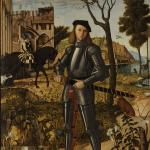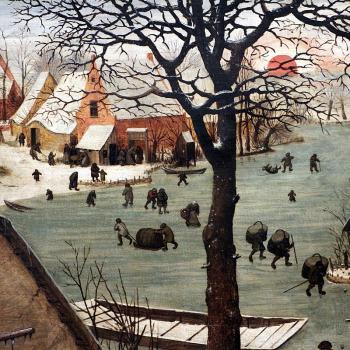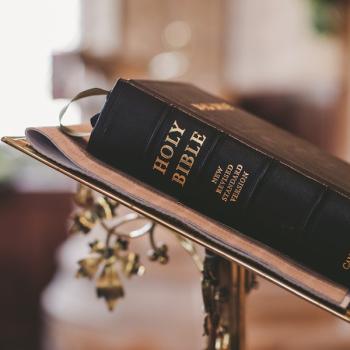Nevertheless, by 1051 AD, Rome and Constantinople had enjoyed a period of peace lasting more than a century. Yet this was not precisely a period of profound unity and cooperation; rather, each Church had its own concerns and preoccupations, and each managed its own affairs. During this time, the Byzantine Empire had undergone a period of expansion, returning to its greatest extent since the rise of Islam in the 7th century; it now controlled not only modern-day Turkey and Greece, but also a large part of Southern Italy and most of Armenia. Because of this, for the first time in many centuries, the Empire was forced to deal with another religious group in its midst, the Armenian Church, with its own rites, customs, hierarchy, and theology. This led, predictably, to significant controversy; and one of the most prominent areas of debate between the two groups was the Armenians’ use of unleavened bread, or azymes, in the Eucharist. At the same time, in the West, the Church had gone through a period of degeneration and weakness, in which a succession of corrupt Popes had brought the Church more and more into subjection to the German Emperor and the secular world in general. This was quite enough to keep the attention of each respective Church.
Yet in the early years of the 11th century, things began to change. First, a Pope finally arose with the strength and character to command the respect of all Europe. Pope Leo IX was a man of integrity and action, and he spent his brief reign prosecuting a remarkable campaign of reform throughout Europe. His target was the entanglement of the Church and State, in all its forms: sexual immorality in the clergy, bishops acting as secular lords, married clergy passing on their office to their sons, the sale of church offices, the subjection of the Church to the whims of the Emperor. At his side were a new generation of Western churchmen, austere, pious, and filled with zealous anger against the abuse of the Church in the name of secular society. Among these was Cardinal Humbert, a French monk and Leo’s secretary in his reforming journeys throughout Europe. Meanwhile, in the East, a period of relative peace and prosperity was continuing, though one marked by intrigues and struggles for the throne. One of the people to become involved in these intrigues was a young man named Michael Cerularius. The ambitious Cerularius participated in a failed plot to overthrow the current Emperor, entered a monastery, and eventually rose through the ranks to become Patriarch of Constantinople.
It was during the ecclesiastical reigns of these two men that a problem arose that at last concerned both East and West. The Normans, bloodthirsty pirates, began plundering the Byzantine duchies of Southern Italy, initiating a bloodbath and forcing Byzantine rite churches to convert to the Latin rite. The Pope was horrified by the suffering of the Southern Italians, and, having failed in his attempts at mediation, eventually decided to take up arms against the Normans. The Byzantine Emperor Constantine IX welcomed the Pope’s involvement, and agreed to ally his forces with the Pope’s in an attempt to drive the Normans out of Italy. In 1053, however, the alliance was crushed and massacred by the Normans, who promptly kidnapped and imprisoned the Pope. This was a massive defeat for both Pope and Empire, which had now effectively lost control of Southern Italy.
It was also in the year 1053 that a series of events took place that are very important to our narrative. First, another Leo, Bishop of Ohrid in Bulgaria, and a subject of Cerularius, sent a letter to the Italian Bishop of Trani addressed “to all the High Priests of the Franks, and to the Most Honored Pope” (Achrida)–in other words, to the entire Western Church. The letter does not make mention of the events happening at that time in Southern Italy, but it does seem logical to associate it with the anger provoked in Constantinople by the actions of the Normans. Yet the letter as it is exists almost without any context at all. According to its author, it is inspired by“[t]he great love of God and the benevolent heart of his sympathy” (Achrida), and its object is not to castigate the Norman atrocities, but rather “to make mention concerning both the Azymes and the Sabbaths, which Mosaically [and] indefensibly fulfilling you hold communion with the Jews” (Achrida). Leo of Ohrid then proceeds directly into a lengthy theological attack on the Western customs of using unleavened bread (or Azymes) in the Eucharist, and of fasting on Saturdays. His argument, put simply, is that both practices are Judaizing, and ignore the proper separation between the New and Old Covenants. Unleavened bread, he argues, is not properly bread at all, but rather a symbol of suffering and affliction, “distinguished in nothing from soulless rock and clay brick and tile” (Achrida). Thus, it is entirely inappropriate for the joyful celebration of the Eucharist. In contrast, leavened bread is a symbol of Christ’s living body, “having warmth and rising” (Achrida), and a sign of Paschal Joy, “full of all sweetness” (Achrida). Likewise, Christ abolished the Sabbath even during his earthly life, and to continue to keep it after his death is a monstrous corruption. Because of this, “the ones keeping the Sabbath with the Azymes and saying that they are Christians are neither Jews nor pure Christians” (Achrida). Likewise, by eating blood and things strangled the Western Christians have violated the prohibition of the book of Acts, and their liturgical customs during Lent and Easter are foreign.
Having condemned all these practices, Leo exhorts the Westerners, “since [they] are about to be judged about these things by God” (Achrida), to immediately change their customs, “leaving the whole Mosaic law and the commandments in it to the Jews, who as blind men groping for a wall […] remain in darkness, always mindless and without understanding” (Achrida). If they do this, he promises, then the Western Church will “become with us one flock of one good and true Shepherd Christ, who is not wishing the death of the sinner, but that he repent and live” (Achrida); and he himself will write again to them to expound the truth of the Christian faith to “the ones deciding to believe well and in an orthodox fashion, towards whom Christ will favorably dispose his soul” (Achrida). Thus ends this remarkable letter.













